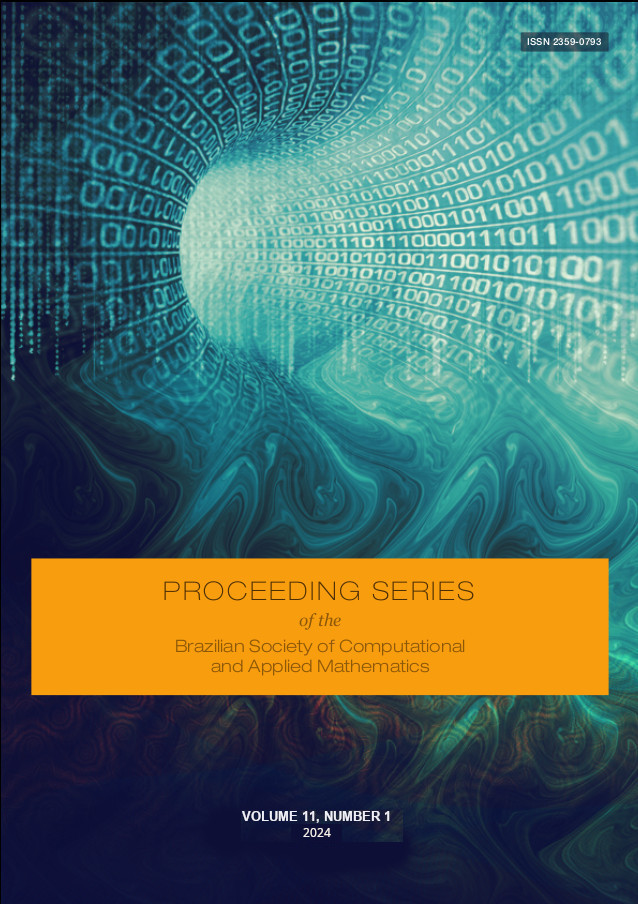Diagnosing Markov chain Monte Carlo for phylogenetics
theory and methods
DOI:
https://doi.org/10.5540/03.2025.011.01.0380Palavras-chave:
coalescent, diagnostics, lumpability, Markov chain Monte Carlo, phylogeneticsResumo
With the advent of Bayesian phylogenetics, Markov chain Monte Carlo (MCMC) methods became the de facto standard for sampling from distributions on the space of phylogenetic trees, or treespace. Treespace is vast and does not admit a canonical representation, posing difficulties to the development of not only efficient MCMC schemes but also sensitive diagnostics. In this talk I will detail recent work on the development of validation and diagnostic tools for assessing the output of phylogenetic MCMC. The talk will cover theoretical/combinatorial results on the lumpability of tree-valued processes as well as empirical/methodological work on simulation-based validation of MCMC samplers.
Downloads
Referências
D. Aldous. “Probability distributions on cladograms”. Em: Random discrete structures. Springer, 1996, pp. 1–18.
R. B. Alves, Y.F. Saporito e L. M. Carvalho. “On lumpability of tree-valued Markov chains”. Em: In preparation (2024).
A. Bittracher e C. Schütte. “A probabilistic algorithm for aggregating vastly undersampled large Markov chains”. Em: Physica D: Nonlinear Phenomena 416 (2021), p. 132799.
M. Brusselmans, L. M. Carvalho, S. L. Hong, J. Gao, F.A. Matsen IV, A. Rambaut, P. Lemey, M. A. Suchard, G. Dudas e G. Baele. “On the importance of assessing topological convergence in Bayesian phylogenetic inference”. Em: arXiv preprint arXiv:2402.11657 (2024).
A. J. Drummond, G. K. Nicholls, A. G. Rodrigo e W. Solomon. “Estimating mutation parameters, population history and genealogy simultaneously from temporally spaced sequence data”. Em: Genetics 161.3 (jul. de 2002), pp. 1307–1320.
A. J. Drummond, A. Rambaut, B. Shapiro e O.G. Pybus. “Bayesian coalescent inference of past population dynamics from molecular sequences”. Em: Molecular biology and evolution 22.5 (2005), pp. 1185–1192.
A. Magee, M. Karcher, F. A. Matsen IV e V. M. Minin. “How trustworthy is your tree? Bayesian phylogenetic effective sample size through the lens of Monte Carlo error”. Em: Bayesian Analysis 1.1 (2023), pp. 1–29.
F. K. Mendes, R. Bouckaert, L.M. Carvalho e A. J. Drummond. “How to validate a Bayesian evolutionary model”. Em: bioRxiv (2024). doi: 10.1101/2024.02.11.579856. eprint: https://www.biorxiv.org/content/early/2024/02/12/2024.02.11.579856.full.pdf. url: https://www.biorxiv.org/content/early/2024/02/12/2024.02.11.579856.
T. Stadler e Z. Yang. “Dating phylogenies with sequentially sampled tips”. Em: Systematic Biology 62.5 (2013), pp. 674–688.
S. Talts, M. Betancourt, D. Simpson, A. Vehtari e A. Gelman. “Validating Bayesian Inference Algorithms with Simulation-Based Calibration”. Em: arXiv preprint arXiv:1804.06788 (2018).
D. Vats e J. M. Flegal. “Lugsail lag windows for estimating time-average covariance matrices”. Em: Biometrika 109.3 (2022), pp. 735–750.
S. Zhu, J. H. Degnan e M. Steel. “Clades, clans, and reciprocal monophyly under neutral evolutionary models”. Em: Theoretical Population Biology 79.4 (2011), pp. 220–227.
S. Zhu, C. Than e T. Wu. “Clades and clans: a comparison study of two evolutionary models”. Em: Journal of Mathematical Biology 71.1 (2015), pp. 99–124.

